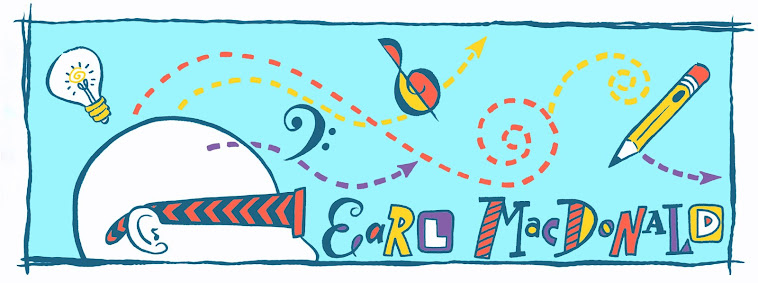I had absolutely no desire to play big band music back in 1993, when I began my jazz graduate studies at Rutgers University. I felt I had played enough Sammy Nestico and Bob Mintzer charts, and I was back in school solely to hone my piano chops under Kenny Barron's tutelage. I remember walking into my mandatory ensemble audition and requesting NOT to be placed in the big band. Mike Mossman, the ensemble's director countered, "But you don't know what music we're playing this semester. Have you heard Maria Schneider's band yet?" I admitted I hadn't, to which he replied, "Go to Visiones on Monday night to check out her band, and then report back to me on Tuesday to let me know if you still have no interest in big band music."
That Monday night in September, 1993 my life was forever changed. I had no idea that a big band could be a such an effective vehicle for self expression, or that such a variety of orchestrational colors could come from just seventeen players. I bought Maria's Evanescence CD that evening, and was hooked; the course of my life took an unexpected turn.
Fast forward twenty-one years (not to mention heaps of big band writing, performing, conducting and recording, etc.)...
One of my former UCONN jazz students, Matt Baum now works at the Jazz Standard night club in New York City, as executive assistant to the club's artistic director. He invited my wife and me to be his guests during one of Maria Schneider's tenth Anniversary Thanksgiving week performances at the Jazz Standard. We chose to attend the early set on Friday night, Nov. 28th. In a word, the show was "brilliant".
They played the following material:
That Monday night in September, 1993 my life was forever changed. I had no idea that a big band could be a such an effective vehicle for self expression, or that such a variety of orchestrational colors could come from just seventeen players. I bought Maria's Evanescence CD that evening, and was hooked; the course of my life took an unexpected turn.
Fast forward twenty-one years (not to mention heaps of big band writing, performing, conducting and recording, etc.)...
 |
| The Maria Schneider Orchestra at the Jazz Standard |
They played the following material:
- Journey Home
- featuring trombonist Ryan Keberle
- A Potter's Song
- dedicated to Laurie Frink
- featuring UCONN Music alumnus (!!!), Gary Versace on accordion
- Night Watchmen (middle mvt. from "Scenes from Childhood")
- featuring Steve Wilson and Mike Rodriguez
- Gumba Blue
- featuring pianist Frank Kimbrough, trumpeter Greg Gilbert and trombonist Marshall Gilkes.
- Home
- a new Rich Perry feature written for the upcoming release, "The Thompson Fields"
- Arbiters of Evolution
- another new piece, featuring saxophonists Donny McCaslin (a.k.a. Dwight Schrute!) and Scott Robinson, whose facility in the bari's upper register is beyond remarkable.
There aren't many bands in the world with such a stacked roster of soloists. Every solo was jaw-droppingly awesome. Describing highlights would be superfluous, as these players don't need my adjectives to affirm their validity.
I look forward to Maria's next CD. It was recorded in August, is currently being mixed, and will be released on April 21st. Seeing this timeline was a good lesson for me. It is interesting to see how much carefully calculated planning goes into the release of her discs. To learn more about her ArtistShare crowdfunding project, click on the link.
What a fun and inspiring evening. I think I'll sharpen my pencils, roll up my sleeves, and get back to the business of writing my own big band music. My creative batteries are recharged. Thanks Matt and Maria!
 |
| With my former UCONN Jazz student, Matt Baum who now works at the Jazz Standard in NYC. |




